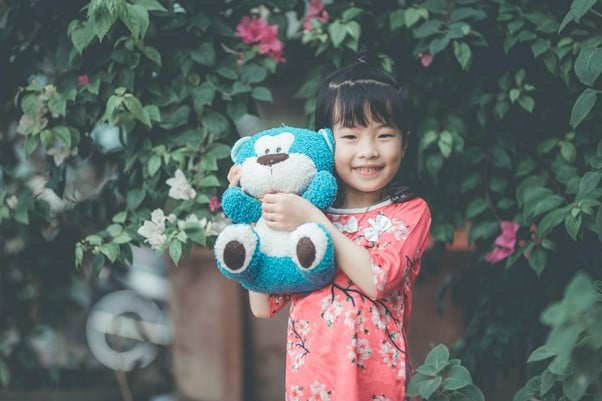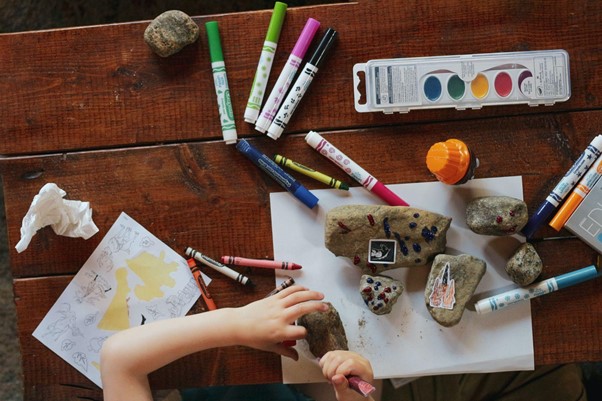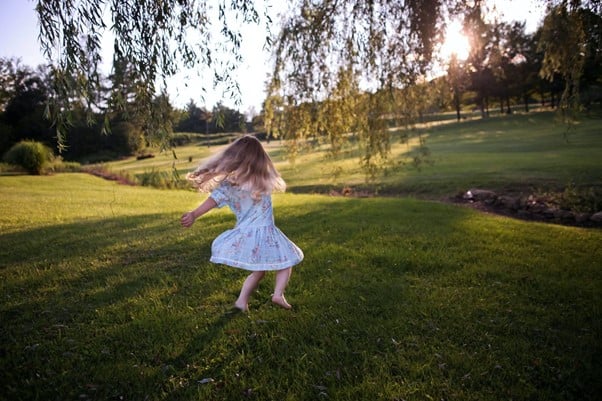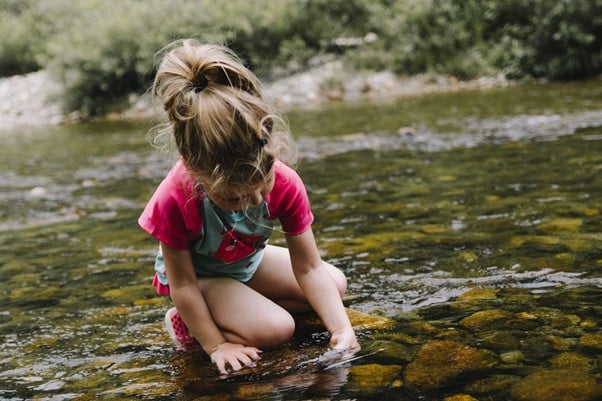Mindfulness is tough, even for adults. So imagine what it is like for children.
Trying to get your little one to sit there, in silence, listening to their breathing, probably isn’t going to work.
So if you want to start your children practicing mindfulness, you’ll probably need to have a few activities up your sleeve.
Thankfully, we’ve compiled a list of 6 mindfulness activities for kids.
What is mindfulness?
Before we go further and talk through some of the activities you can do with your children, it’s probably covering what mindfulness is.
The basic definition of mindfulness is:
“The basic human ability to be fully present, aware of where we are and what we’re doing., and not overly reactive or overwhelmed by what’s going on around us.” – Mindful.org
That means it can be anything that requires a person to be totally present in the moment, honing all their senses of feeling, hearing, seeing, touch and smell.
Mindfulness includes a wide range of activities, from standard meditation to mindful gardening, eating, walking and reading - it can be used in hundreds of situations to help induce calm and serenity.
How mindfulness benefits kids
Now we’ve cleared up what Mindfulness is, it’s worth looking at some of the benefits it offers children.
Mindfulness is particularly good for children as it helps them learn how to cope with the pressures of everyday life and deal with stress and anxiety using natural coping mechanisms.
Other headline benefits of mindfulness for children and young people are:
- ● Helps to build self-confidence
- ● Increases focus and attention
- ● Provides better overall wellbeing
- ● Teaches greater empathy and kindness to others
- ● Contributes to better academic results
Children get a great sense of empowerment when practising mindfulness, and they get to have fun too as all of the following activities are introduced as games!
Mindfulness Activities For Kids
Deep Breathing with stuffed animals
Suitable for children aged 3+

Photo by Khanh Steven on Unsplash
Learning to deep breathe is one of the most basic skills to learn as part of a child’s mindfulness journey. To help them to engage and stay focussed, this activity uses their favourite stuffed toy as a focal point.
Here’s what to do to practice this with your kid:
- 1. Find a quiet space inside or outside where you are unlikely to be disturbed. Get the child to lie down on their back and place their favourite cuddly toy on their tummy.
- 2. Then, get them to breathe in a deep breath and watch their tummies push their toy up, then slowly exhale and watch them go down again. Repeat this for 10 breaths, encouraging them to keep watching their toy and the way their diaphragm moves.
This will help the child to concentrate on and develop a good deep breathing technique. It also teaches them how they control their own body and make it move.
If you wanted to take it up a notch, you could ask the child to watch the toy going up and down whilst thinking about something they are proud of, or someone they love. This concentrates their mind and associates those positive thoughts with deep breathing, which will naturally make them feel calm and at ease.
Sound meditation
Suitable for children 2+
This is a listening activity that will develop imagination, focus and empathy. It’s something you can do anywhere to keep a child calm and avoid distractions. As we carry out the activity with our eyes closed, this heightens other senses so the child tunes into sound and the world around them at that particular time.
Here’s how to practice sound meditation with your child:
- 1. Find a location that may have interesting sounds happening - it can be a busy place or a mostly quiet place.
- 2. Ask the child to lay or sit in the space with their eyes closed and ask them to listen and notice all the sounds around them.
Change the location each time to keep it fresh - maybe one day a public park so they experience the sounds of ducks and tweeting birds, water or bicycle bells. Then next time maybe in a cafe where they will hear people chatting, coffee machines and clinking cups.
Ask your child what they noticed or heard each time, you'll be surprised by the detail they can go into.
Creative craft
Suitable for children 1+

Photo by Sigmund on Unsplash
Art activities with children for mindfulness increases positive emotions and helps them (and adults) to focus on producing something for themselves or someone else that’s hand made and from the heart.
Producing art and craft, whether a painted picture or a clay sculpture, is creating an extended part of us and captures our emotions and thoughts at the time of making.
For this activity, simply gather art and craft supplies such as paints, crayons, craft paper and embellishments, create a clear space and let the child free to create anything they want!
When a child makes something, it forces them to mindfully concentrate on that craft whilst reducing stress and anxiety.
You can find affordable children’s craft supplies at The Works, such as colouring in books, modelling clay and paints.
Monkey see, Monkey do
Suitable for children 2+

Photo by Gabby Orcutt on Unsplash
This activity requires YOU to let loose and get silly!
The kids will love this game of copycat and as a mindfulness activity, it helps them appreciate what their body can do and the space they can move around in.
Here’s how to play Monkey see, Monkey do:
- 1. Stand in front of the children and strike a pose - maybe on one leg, or arms stretched up to the sky, be creative!
- 2. Children have to copy what you’re doing and hold the pose for 5 seconds before you change poses
Talk about the game afterwards and delve a little deeper into what the kids felt when they played. If you’re stuck on how to do this you can ask them questions like; did a particular pose make them laugh? Or was one really hard or really easy for them? This will help them to reflect on the activity and cement lasting memories.
The Mindful jar
Suitable for children 3+

Photo by Sharon McCutcheon on Unsplash
For active mindfulness, it’s good for a child to talk about and understand how their mind works on a basic level. The mindful jar is a craft activity that doubles as an exercise to help children recognise overwhelm and confusion.
Here’s what to do:
- 1. Fill a larger clear jar with water
- 2. Add a large spoonful of glitter glue
- 3. Get the kids to shake the jar and then set it in front of them.
- 4. As the glitter swirls around in the jar, explain that the glitter represents their thoughts and that when we are still, we can see and think more clearly.
This exercise teaches children that emotions and stress can cause bad decisions, and how clarity and calm are positive.
Using a physical thing to show them this is really effective and also a bit crafty, so it’s mindfulness play from beginning to end!
Nature walk
Suitable for children 2+

Photo by Kelly Sikkema on Unsplash
Being out amongst nature has obvious mental health benefits for adults and children. Kids love to get dirty in the mud and puddles, so they will have a lot of fun with this mindfulness exercise whatever the time of year.
Organising the nature walk is pretty straightforward - simply plan a short route that includes outside areas where you are likely to see and hear animals and insects. Lead your nature-loving kids on the walk and ask them to notice and count all the creatures they see and hear along the way.
Encourage them to ground themselves in the soil and grass and carefully dig around for worms and beetles with their hands. Help them count and talk about what they find, maybe even encourage them to create a back story to what they find to get their imaginations running wild.
To summarise
Carrying out mindfulness activities for young children will not only help them but you’ll get something out of it too from watching them learn and play. And, to get the most from it, you should practise mindfulness yourself to have a full appreciation of what you’re introducing to your children and to reap the mental and physical benefits first-hand.
Remember mindfulness is a learnt skill, so do these activities regularly and your kids will get better and better with practice, and will have fun improving along the way. Good luck!

